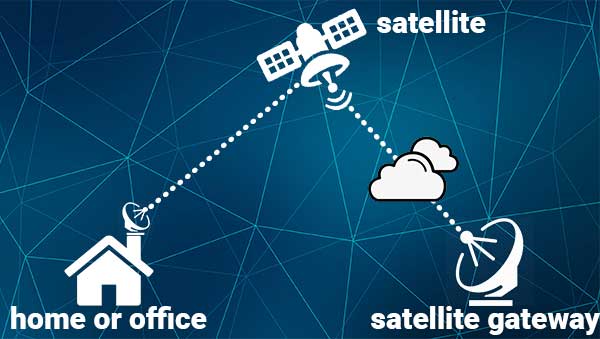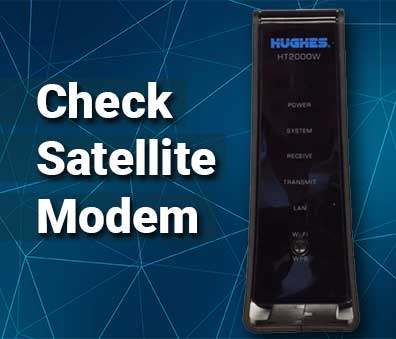In this day and age, when more and more people are starting to explore options for sustainable, rural, and off-grid living, internet infrastructure and connectivity options in rural areas are receiving ever more attention.
City and suburban homes have multiple choices, but the further away from urban areas you decide to make your home, the fewer options you have.
First, you lose fiber-optics, then cable internet, both being the fastest and most reliable. If you move even further from urban infrastructure, you’ll lose DSL, then even cellular internet. All that is left at that point are satellite internet providers and services such as HughesNet.

On paper, it’s not even that bad. Your internet speeds should be able to reach 25Mbps for download and 3 Mbps for upload, which is adequate and considered broadband internet speed by all relevant standards. However, more often than not, you won’t be able to get those numbers when you run an internet speed test.
If you wonder why your HughesNet is running slow and if there is anything you can do to make it run faster, you’ve come to the right place. This article will explain the most common reasons for slow satellite internet speeds and a few things you can do to make it run faster and more reliably than it currently does.
Therefore, just sit back, pour yourself a cup of coffee or tea, and enjoy the reading while we dive into the explanation.
CONTENTS
What Can Influence HughesNet Internet Speeds?
There are a handful of different reasons that may influence your HughesNet satellite internet speeds, but most of them fall into one of three categories:
- Weather conditions
- Satellite Dish Alignment and
- Network infrastructure on both ends
To help you understand why and help you anticipate possible future problems, we need to explain how satellite internet works.
Whenever you request data when using the satellite internet, the signal goes to your satellite router and then to the satellite dish. If properly directed to the position of the geostationary satellite orbiting the Earth 22.236 miles above the equator.
The satellite picks up the signal, and then relays it back to Earth, to the network operations center run by your internet service provider. From there, the signal goes to the specific server on the internet. The server replies by sending the data you requested, and the process goes through the same steps but in the other direction.
This takes some time. Approximately 0.5s for the signal data to get from your computer and receive the answer. The time required for you to send a request for data and receive the answer is called latency. Half a second is not much in our perception of time, but that is a long time in the computer world. That half of a second will significantly limit your use of certain services and applications. Online video games or video conferencing, for example.
Therefore, if you need to use the satellite internet for uploading and downloading files, latency will be of no issue for you. Once the data starts flowing, it goes pretty fast.
However, for you to get any data at all, that signal needs to be pointed at the satellite and penetrate the earth’s atmosphere.

You see, satellite internet works by using radio waves to send data to the satellite. Radio waves are great for that, but they also have some downsides. For example, frequencies in the 1-2 GHz range used for satellite internet communications have an adequate range and allow pretty decent data speeds.
However, they still suffer significant losses when passing through the water, and they are susceptible to electromagnetic interferences. In other words, your satellite internet will work much worse if there are heavy clouds full of water droplets that will dissipate the signal or an electromagnetic storm above your head.
Additionally, the signal your satellite dish is sending is directional with a very narrow beam. Therefore, if the dish is misaligned even for an inch or two, it will struggle to hit the satellite and/or pick up its signal.
Lastly, if you really want to squeeze out every last bit of your HughesNet satellite internet, you must pay attention to the modem/router location in your home and how your devices are connected to it. 25Mbps download speed is not much to begin with, and if you lose additional speed due to a bad Wi-Fi signal, you won’t have much left to work with.
Enough with the theory behind slow HughesNet satellite internet speeds. Let’s see what you can do about it.
NOTE: Before you start solving HughesNet slow internet issues, make sure to do an internet speed test using a device that is connected to the router using an ethernet cable and to match the results against your internet plan. If you are getting what you paid for or very close to it, it is what it is. If that is not fast enough for you, consider other internet options if they are available.
How To Speed Up HughesNet Internet?
There are a couple of checks you can do and potentially improve your internet speeds and reliability.
Check the Dish Condition and Alignment
As we mentioned earlier, the satellite dish needs to be pointed precisely to the satellite. If it gets misaligned, your internet speeds will drop dramatically as a result. Furthermore, the satellite dish is exposed to the elements and wildlife, so it is not uncommon to find the dish and the receiver covered with all kinds of junk and debris.
Go outside and check if everything is looking OK. Clean the dish and the receiver and readjust the dish if necessary.
Check Cables and Connectors
Cables running between the dish and the home can present a chewing exercise for many critters. Check for loose connections and visually inspect to see if the cable running between the dish and the router is damaged or broken.
Check Satellite Modem

Lastly, check your satellite modem/router and reboot it from time to time. All routers have cache memory that can fill up with junk over time. Rebooting or power cycling the router clears that memory and all the bugs that can slow down your connection.
If it’s the Wi-Fi signal reason for slow internet, you might want to consider adding another, better router or Wi-Fi signal extender to keep as much data flow as possible.
Summary
If you are not happy with your HughesNet Satellite internet speeds, you might want to perform an internet speed test. For this test, try using a device connected to the router via ethernet cable. Match the results to your internet plan. If they are pretty much the same, there is not much you can do. It is what it is. However, if you are getting much less than promised, go through the following steps:
Go outside and check the satellite dish and receiver. Clean them both and realign the dish if needed.
Check the cable and connections between the dish and the router.
Reboot the router to clear cache memory and potential software bugs.
Add a better Wi-Fi router or Wi-Fi extender if you have problems only on devices connected using Wi-Fi.

Hey, I’m Jeremy Clifford. I hold a bachelor’s degree in information systems, and I’m a certified network specialist. I worked for several internet providers in LA, San Francisco, Sacramento, and Seattle over the past 21 years.
I worked as a customer service operator, field technician, network engineer, and network specialist. During my career in networking, I’ve come across numerous modems, gateways, routers, and other networking hardware. I’ve installed network equipment, fixed it, designed and administrated networks, etc.
Networking is my passion, and I’m eager to share everything I know with you. On this website, you can read my modem and router reviews, as well as various how-to guides designed to help you solve your network problems. I want to liberate you from the fear that most users feel when they have to deal with modem and router settings.
My favorite free-time activities are gaming, movie-watching, and cooking. I also enjoy fishing, although I’m not good at it. What I’m good at is annoying David when we are fishing together. Apparently, you’re not supposed to talk or laugh while fishing – it scares the fishes.
